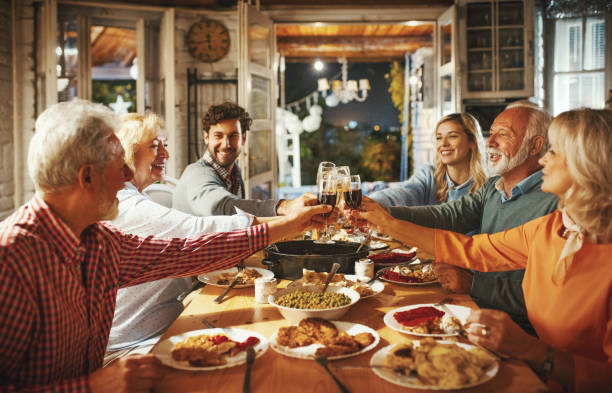Key Takeaways
- Wine selection doesn’t have to be complicated—consider the occasion, menu, and preferences of guests.
- Pairing wine with food enhances the dining experience for everyone.
- There are practical tips to help you pick the right bottle and become a thoughtful dinner party attendee or host.
The Art of Selecting Wine for a Dinner Party
Throughout history, wine has been celebrated as a centerpiece for gatherings, symbolizing joy, connection, and a sense of occasion. From ancient Roman banquets to contemporary backyard barbecue feasts, the act of sharing wine appears to be almost universal across cultures. The right selection of wine can instantly create a sense of warmth and hospitality, helping guests relax and engage in genuine conversation. Today, wine comes in an astonishing range of flavors, styles, and prices; however, picking a bottle doesn’t have to be an intimidating task. The comfort of your guests should always trump the need to impress with something expensive or rare. When thinking about wine for dinner parties, the experience you create is far more important than the label itself.
Embracing a relaxed mindset is key. Guests are often more interested in sharing stories, laughter, and food than in critiquing each bottle. By focusing on how wine can enhance these moments, hosts and guests can make the selection process enjoyable and meaningful. Even for those who consider themselves novices, a little bit of forethought can go a long way toward creating a welcoming and memorable occasion.
Understanding Your Guests’ Tastes
To host a successful dinner party, careful planning is essential. This involves taking into account guests’ wine preferences (like dry whites or full-bodied reds) using a food and wine pairing guide, as well as their dietary restrictions (such as gluten-free or vegan). Proper wine pairings, such as serving Sauvignon Blanc with seafood, Chardonnay with chicken, or Cabernet Sauvignon with steak, enhance the overall dining experience. Discreetly asking about guests’ favorite varietals or any allergies demonstrates attentiveness. Reflecting on their previous choices can also offer valuable insights into their tastes. Providing a varied selection of wines guarantees that there’s something for everyone, especially given the abundance of quality options available on the market today.
Pairing Wine With the Menu
The synergy between food and wine can elevate a dinner party from routine to remarkable. Classic pairings, such as Sauvignon Blanc with goat cheese or Cabernet Sauvignon with grilled steak, are time-honored for good reason—they complement each other’s flavors and textures. But don’t feel bound by tradition; guests today often love to discover unexpected combinations. Creating a menu and then working backward to identify wines that might flatter its main ingredients is a practical strategy. Think about the weight of the food—hearty roasts will generally overpower a delicate white, while zesty salads or spicy dishes are often lifted by aromatic, low-tannin wines.
For ideas that go beyond the basics, explore wine pairing guides from trusted culinary sources. These guides offer creative approaches for both traditional and modern menus, showcasing suggested bottles for everything from rich Italian pastas to sushi or vegan fare. Don’t be afraid to experiment—sometimes the best combinations are those discovered by happy accident.
Choosing Between Red, White, Rosé, and Sparkling
The beauty of modern wine culture lies in its variety—today, a well-set table often features more than one style. Rich, warming reds, such as Cabernet Sauvignon or Malbec, pair beautifully with cool weather and robust fare like braised meats or aged cheeses. Crisp whites, such as Sauvignon Blanc or unoaked Chardonnay, are refreshing on warm days or when serving dishes like seafood, salads, or creamy pasta. Rosé, equally suited to both sunshine and candlelight, offers a fruit-forward, versatile choice that can bridge many flavor profiles.
Sparkling wines are a perennial favorite for gatherings, elevating even the simplest meal into a celebration. Bubbles complement appetizers, fried foods, and light desserts, often providing a fun contrast to rich or salty dishes. Keeping a bottle chilled lets you cater to unexpected toasts or spontaneous moments of joy—a hallmark of any memorable dinner party.
How Much Wine to Bring or Serve
Calculating the right amount of wine is both an art and a science. As a typical guideline, plan for half a bottle (about two glasses) per person for the duration of the dinner. For an event with eight adult guests, that’s usually four bottles, allowing for refills but not overindulgence. Consider whether you’ll offer multiple wine options (red, white, rosé, sparkling) or serve wine throughout each course, as this may impact quantities.
Experts in entertaining frequently suggest that variety is more important than abundance. According to entertaining experts, having a couple of reds and whites lets guests pick their favorite or try something new, making the atmosphere feel inclusive and festive. It’s much better to have a modest selection of options than to run out or serve subpar bottles just to boost volume.
Wine Presentation and Serving Tips
The way wine is presented and served can amplify enjoyment without any extra fuss. Serving temperatures really do matter—white and sparkling wines reveal their crisp, refreshing qualities when chilled to about 45–50°F (7–10°C), while most reds taste best at a slightly cooler room temperature, around 60–65°F (15–18°C). For glassware, standard all-purpose wine glasses work well, but what matters most is having clean, clear glasses that let guests appreciate the color and aroma of the wine.
Decanting can be a nice flourish for young reds or wines with sediment. Simply pouring wine into a carafe and letting it breathe for 15–30 minutes often softens tannins and amplifies aromas. For hosts, presenting the bottle at the table, pouring a splash for tasting, and then filling guests’ glasses is a classic way to make everyone feel special. These little rituals help create an atmosphere of care and celebration.
Thoughtful Wine Gifting Etiquette
Arriving with a bottle of wine is a timeless gesture of gratitude and thoughtfulness. When choosing a gift, opt for versatile selections like Pinot Noir, which pairs with a wide range of foods, or a reliable white such as Riesling or Sauvignon Blanc. If you’re not sure about the menu, sparkling wine is almost always appreciated for its festive flair.
Attaching a short note lets your host know whether you mean for the wine to be enjoyed now or saved for a special occasion later. If you’re familiar with the host’s personal favorites, surprising them with a thoughtful pick shows you care. Ultimately, wine gifting is less about price and more about thoughtfulness.
Storing Leftover Wine After the Party
Even with careful planning, leftover wine is a common occurrence. Storing it properly allows you to enjoy it over the following days without losing flavor. Resealing bottles and refrigerating both reds and whites slows down oxidation, helping them stay fresh for several days. For those who entertain often, investing in a vacuum pump or wine preservation system can make a big difference.
Don’t let leftover wine go to waste: use it to deglaze pans for sauces, add depth to stews and soups, or even bake with it in cakes or poached fruit recipes. A little extra creativity ensures the party lingers just a bit longer in every delicious bite.
Final Thoughts: Keeping Wine Fun and Approachable
At the end of the day, the best wine for your dinner party is the one that helps bring friends and family together. Don’t let tradition or the search for perfection get in the way of making good memories. Whether you stick with tried-and-true pairings or experiment with new combinations, remember that hospitality and laughter are the key ingredients.
Sharing wine at the table should always be inviting, never intimidating. Choose bottles you enjoy, welcome your guests with a warm smile, and savor the magic that a good glass of wine can add to your next dinner party.

